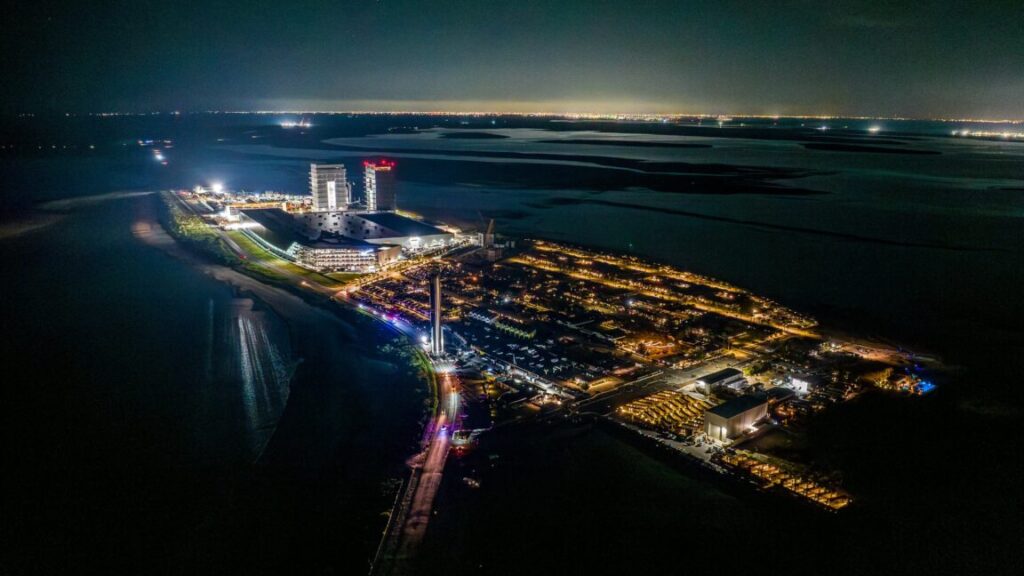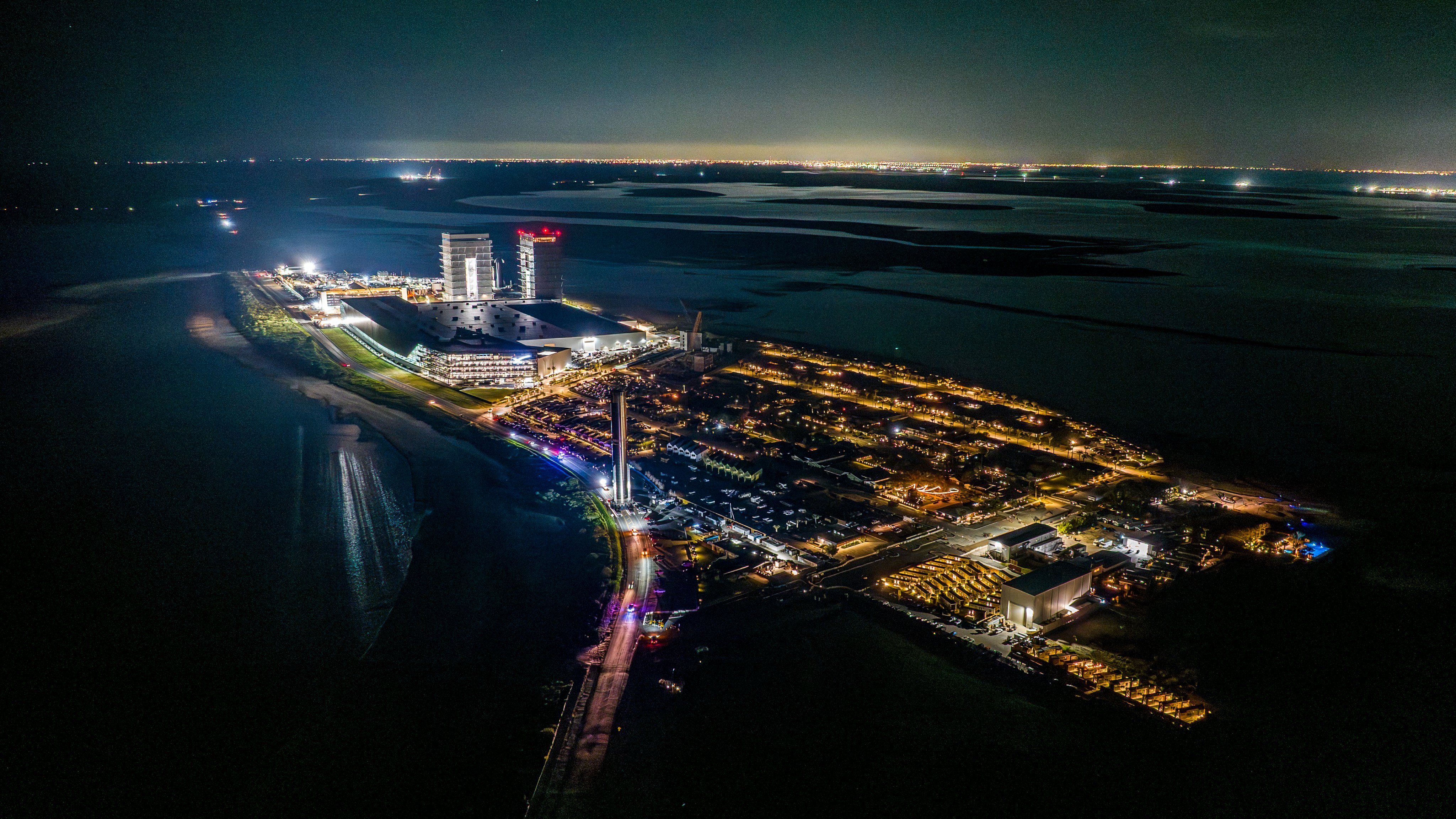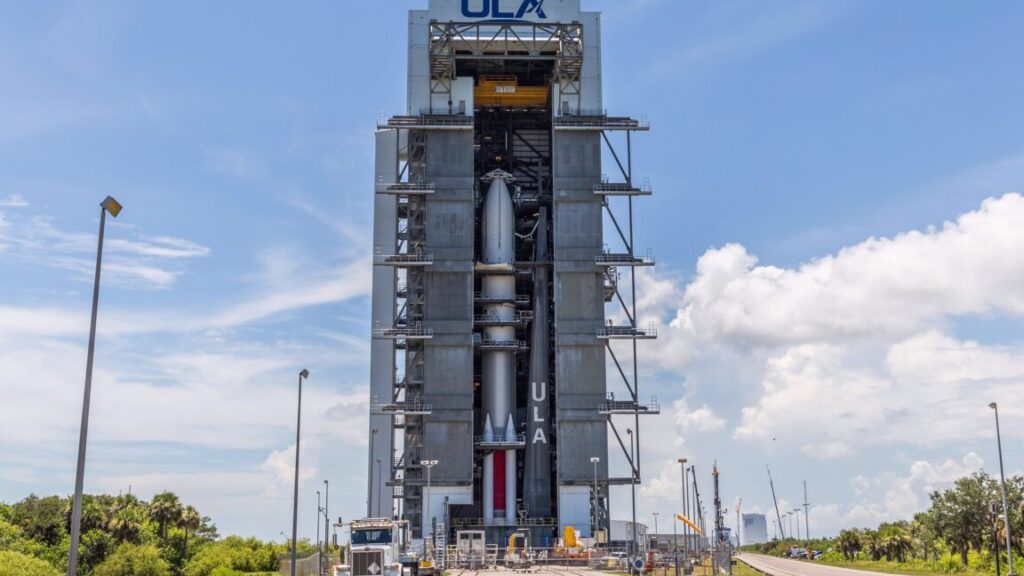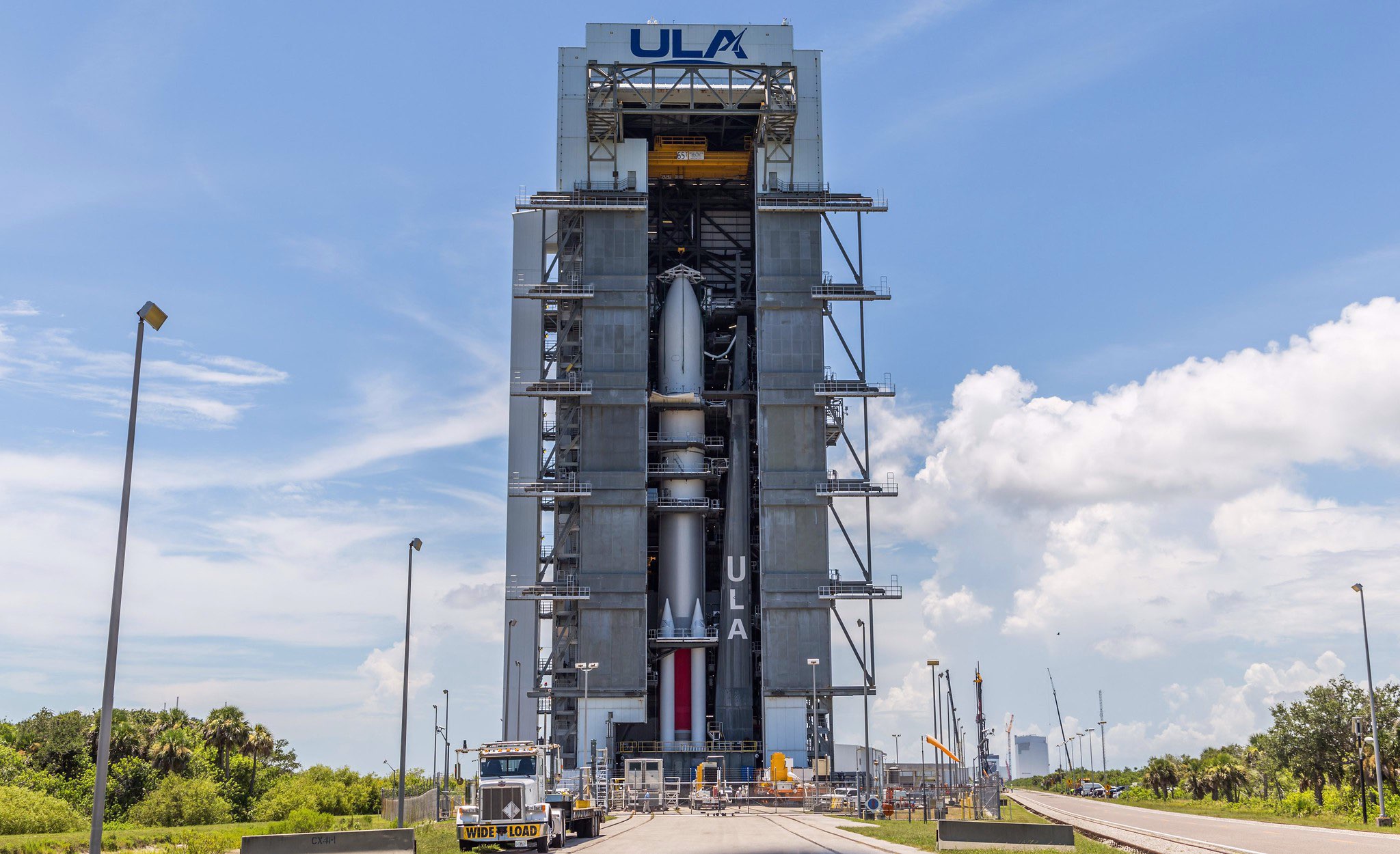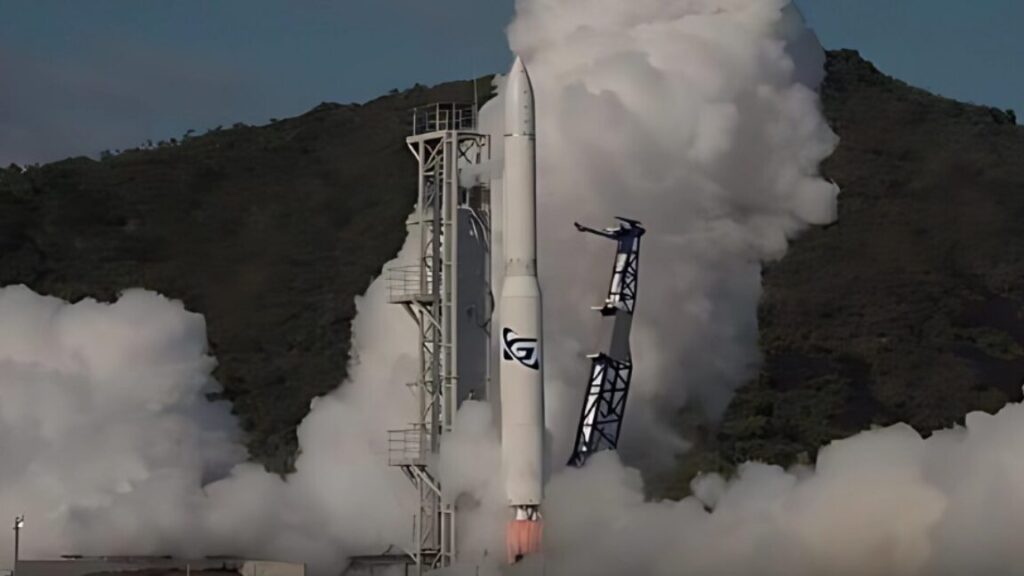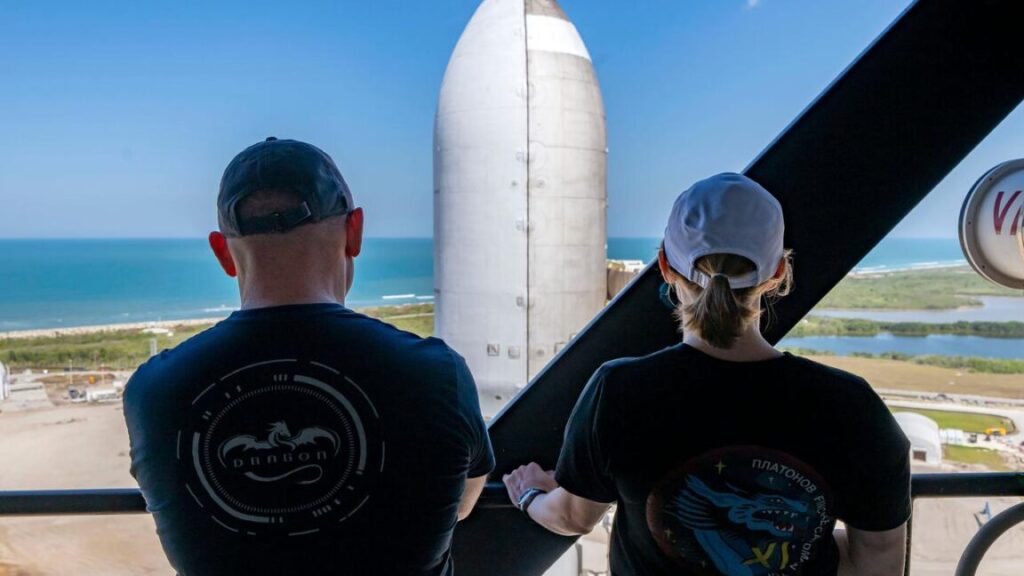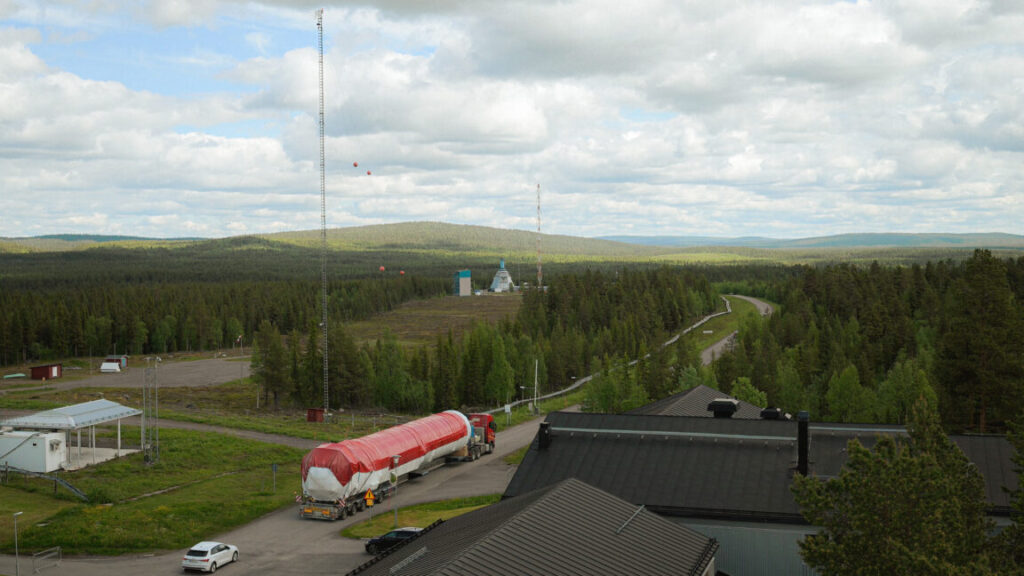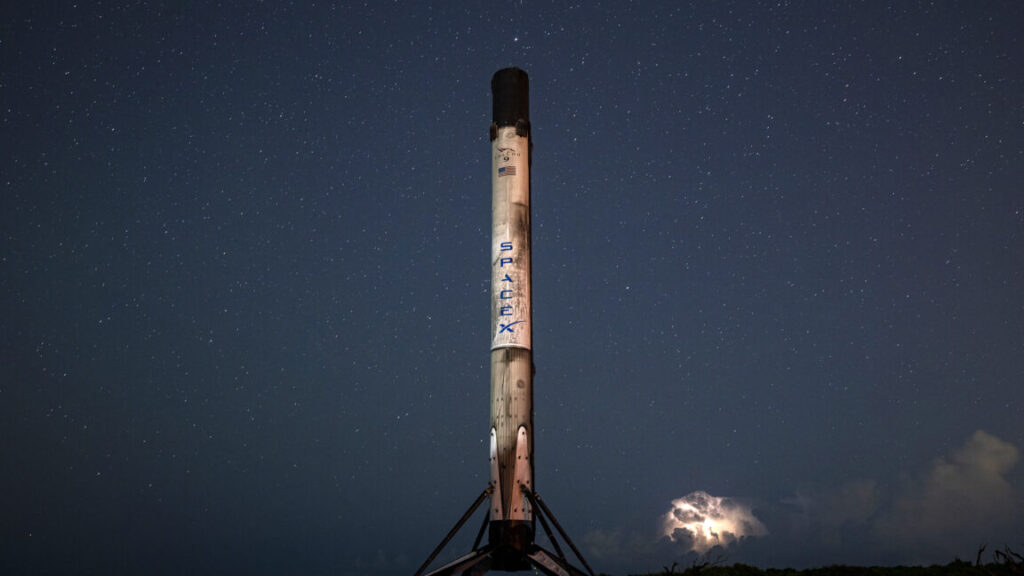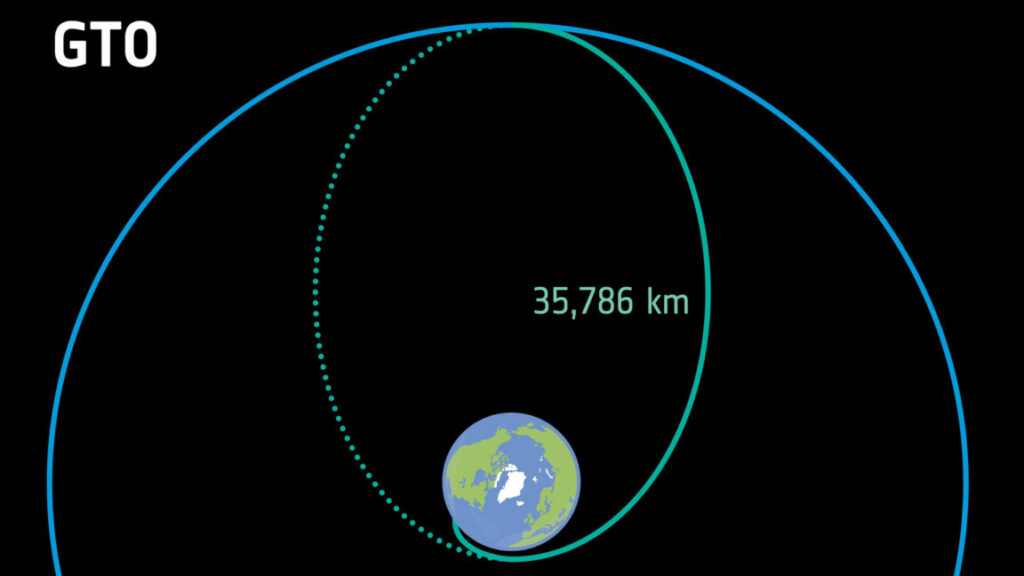Rocket Report: Pivotal Starship test on tap, Firefly wants to be big in Japan
All the news that’s fit to lift
Starship returns to the launch pad for the first time in three months.
SpaceX released this new photo of the Starbase production site, with a Starship vehicle, on Thursday. Credit: SpaceX
Welcome to Edition 8.07 of the Rocket Report! It’s that time again: another test flight of SpaceX’s massive Starship vehicle. In this week’s report, we have a review of what went wrong on Flight 9 in May and a look at the stakes for the upcoming mission, which are rather high. The flight test is presently scheduled for 6: 30 pm local time in Texas (23: 30 UTC) on Sunday, and Ars will be on hand to provide in-depth coverage.
As always, we welcome reader submissions, and if you don’t want to miss an issue, please subscribe using the box below (the form will not appear on AMP-enabled versions of the site). Each report will include information on small-, medium-, and heavy-lift rockets and a quick look ahead at the next three launches on the calendar.

Firefly looks at possibility of Alpha launches in Japan. On Monday, Space Cotan Co., Ltd., operator of the Hokkaido Spaceport, announced it entered into a memorandum of understanding with the Texas-based launch company to conduct a feasibility study examining the practicality of launching Firefly’s Alpha rocket from its launch site, Spaceflight Now reports. Located in Taiki Town on the northern Japanese Island of Hokkaido, the spaceport bills itself as “a commercial spaceport that serves businesses and universities in Japan and abroad, as well as government agencies and other organizations.” It advertises launches from 42 degrees to 98 degrees, including Sun-synchronous orbits.
Talks are exploratory for now … “We look forward to exploring the opportunity to launch our Alpha rocket from Japan, which would allow us to serve the larger satellite industry in Asia and add resiliency for US allies with a proven orbital launch vehicle,” said Adam Oakes, vice president of launch at Firefly Aerospace. All six of Firefly Aerospace’s Alpha rocket launches so far took off from Space Launch Complex 2 at Vandenberg Space Force Base in California. The company is slated to launch its seventh Alpha rocket on a mission for Lockheed Martin, but a date hasn’t been announced while the company continues to work through a mishap investigation stemming from its sixth Alpha launch in April. (submitted by EllPeaTea)
Chinese methane rocket fails. A flight test of one of Chinese commercial rocket developer LandSpace Technology’s methane-powered rockets failed on Friday after the carrier rocket experienced an “anomaly,” Reuters reports. The Beijing-based startup became the world’s first company to launch a methane-liquid oxygen rocket with the successful launch of Zhuque-2 in July 2023. This was the third flight of an upgraded version of the rocket, known as Zhuque-2E Y2.
Comes as larger vehicle set to make debut … The launch was carrying four Guowang low-Earth orbit Internet satellites for the Chinese government. The failure was due to some issue with the upper stage of the vehicle, which is capable of lofting about 3 metric tons to low-Earth orbit. LandSpace, one of China’s most impressive ‘commercial’ space companies, has been working toward the development and launch of the medium-lift Zhuque-3 vehicle. This rocket was due to make its debut later this year, and it’s not clear whether this setback with a smaller vehicle will delay that flight.
The easiest way to keep up with Eric Berger’s and Stephen Clark’s reporting on all things space is to sign up for our newsletter. We’ll collect their stories and deliver them straight to your inbox.
Avio gains French Guiana launch license. The French government has granted Italian launch services provider Avio a 10-year license to carry out Vega rocket operations from the Guiana Space Centre in French Guiana, European Spaceflight reports. The decision follows approval by European Space Agency Member States of Italy’s petition to allow Avio to market and manage Vega rocket launches independently of Arianespace, which had overseen the rocket’s operations since its introduction.
From Vega to Vega … With its formal split from Arianespace now imminent, Avio is required to have its own license to launch from the Guiana Space Centre, which is owned and operated by the French government. Avio will make use of the ELV launch complex at the Guiana Space Centre for the launch of its Vega C rockets. The pad was previously used for the original Vega rocket, which was officially retired in September 2024. (submitted by EllPeaTea)
First space rocket launch from Canada this century. Students from Concordia University cheered and whistled as the Starsailor rocket lifted off on Cree territory on August 15, marking the first of its size to be launched by a student team, Radio Canada International reports. The students hoped Starsailor would enter space, past the Kármán line, which is at an altitude of 100 kilometers, before coming back down. But the rocket separated earlier than expected. The livestream can be seen here.
Persistence is thy name … This was Canada’s first space launch in more than 25 years, and the first to be achieved by a team of students, according to the university. Originally built for a science competition, the 13-meter tall rocket was left without a contest after the event was cancelled due to the COVID-19 pandemic. Nevertheless, the team, made up of over 700 members since 2018, pressed forward with the goal of making history and launching the most powerful student-built rocket. (submitted by ArcticChris, durenthal, and CD)

SpaceX launches its 100th Falcon 9 of the year. SpaceX launched its 100th Falcon 9 rocket of the year Monday morning, Spaceflight Now reports. The flight from Vandenberg Space Force Base carried another batch of Starlink optimized V2 Mini satellites into low-Earth orbit. The Starlink 17-5 mission was also the 72nd SpaceX launch of Starlink satellites so far in 2025. It brings the total number of Starlink satellites orbited in 2025 to 1,786.
That’s quite a cadence … The Monday morning flight was a notable milestone for SpaceX. It is just the second time in the company’s history that it achieved 100 launches in one calendar year, a feat so far unmatched by any other American space company, and it is ahead of last year’s pace. Kiko Dontchev, SpaceX’s vice president of launch, said on the social media site X, “For reference on the increase in launch rate from last year, we hit 100 on Oct 20th in 2024. SpaceX is likely to launch more Falcon 9s this year than the total number of Space Shuttle missions NASA flew in three decades. (submitted by EllPeaTea)
X-37B launch set for Thursday night. The US Department of Defense’s reusable X-37B Orbital Test Vehicle is about to make its eighth overall flight into orbit, NASASpaceflight.com reports. Vehicle 1, the first X-37B to fly, is scheduled to launch atop a SpaceX Falcon 9 from the Kennedy Space Center’s Launch Complex 39A on Thursday at 11: 50 pm ET (03: 50 UTC on Friday, August 22). The launch window is just under four hours long.
Will fly for an unspecified amount of time … Falcon 9 will follow a northeast trajectory to loft the X-37B into a low-Earth orbit, possibly a circular orbit at 500 km altitude inclined 49.5 degrees to the equator. The Orbital Test Vehicle 8 mission will spend an unspecified amount of time in orbit, with missions lasting hundreds of days in orbit before landing on a runway. The booster supporting this mission, B1092-6, will perform a return-to-launch-site landing and touchdown on the concrete pad at Landing Zone 2. (submitted by EllPeaTea)
Report finds SpaceX pays few taxes. SpaceX has received billions of dollars in federal contracts over its more than two-decade existence, but it has most likely paid little to no federal income taxes since its founding in 2002, The New York Times reports. The rocket maker’s finances have long been secret because the company is privately held. But the documents reviewed by the Times show that SpaceX can seize on a legal tax benefit that allows it to use the more than $5 billion in losses it racked up by late 2021 to offset paying future taxable income.
Use of tax benefit called ‘quaint’ … Danielle Brian, the executive director of the Project on Government Oversight, a group that investigates corruption and waste in the government, said the tax benefit had historically been aimed at encouraging companies to stay in business during difficult times. It was “quaint” that SpaceX was using it, she said, as it “was clearly not intended for a company doing so well.” It may be quaint, but it is legal. And the losses are very real. Since its inception, SpaceX has invested heavily in its technology and poured revenues into further advances. This has been incredibly beneficial to NASA and the Department of Defense. (submitted by Frank OBrien)

There’s a lot on the line for Starship’s next launch. In a feature, Ars reviews the history of Starbase and its production site, culminating in the massive new Starfactory building that encompasses 1 million square feet. The opening of the sleek, large building earlier this year came as SpaceX continues to struggle with the technical development of the Starship vehicle. Essentially, the article says, SpaceX has built the machine to build the machine. But what about the machine?
Three failures in a row … SpaceX has not had a good run of things with the ambitious Starship vehicle this year. Three times, in January, March, and May, the vehicle took flight. And three times, the upper stage experienced significant problems during ascent, and the vehicle was lost on the ride up to space, or just after. Sources at SpaceX believe the upper stage issues can be resolved, especially with a new “Version 3” of Starship due to make its debut late this year or early in 2026. But the acid test will only come on upcoming flights, beginning Sunday with the vehicle’s tenth test flight.
China tests lunar rocket. In recent weeks, the secretive Chinese space program has reported some significant milestones in developing its program to land astronauts on the lunar surface by the year 2030, Ars reports. Among these efforts, last Friday, the space agency and its state-operated rocket developer, the China Academy of Launch Vehicle Technology, successfully conducted a 30-second test firing of the Long March 10 rocket’s center core with its seven YF-100K engines that burn kerosene and liquid oxygen.
A winner in the space race? … The primary variant of the rocket will combine three of these cores to lift about 70 metric tons to low-Earth orbit. As part of China’s plan to land astronauts on the Moon “before” 2030, this rocket will be used for a crewed mission and lunar lander. Recent setbacks with SpaceX’s Starship vehicle—one of two lunar landers under contract with NASA, alongside Blue Origin’s Mark 2 lander—indicate that it will still be several years until these newer technologies are ready to go. Ars concludes that it is now probable that China will “beat” NASA back to the Moon this decade and win at least the initial heat of this new space race.
Why did Flight 9 of Starship fail? In an update shared last Friday ahead of the company’s next launch, SpaceX identified the most probable cause for the May failure as a faulty main fuel tank pressurization system diffuser located on the forward dome of Starship’s primary methane tank. The diffuser failed a few minutes after launch, when sensors detected a pressure drop in the main methane tank and a pressure increase in the ship’s nose cone just above the tank, Ars reports.
Diffusing the diffuser … The rocket compensated for the drop in main tank pressure and completed its engine burn, but venting from the nose cone and a worsening fuel leak overwhelmed Starship’s attitude control system. Finally, detecting a major problem, Starship triggered automatic onboard commands to vent all remaining propellant into space and “passivate” itself before an unguided reentry over the Indian Ocean, prematurely ending the test flight. Engineers recreated the diffuser failure on the ground during the investigation and then redesigned the part to better direct pressurized gas into the main fuel tank. This will also “substantially decrease” strain on the diffuser structure, SpaceX said.
Next three launches
August 22: Falcon 9 | X-37B space plane | Kennedy Space Center, Fla. | 03: 50 UTC
August 22: Falcon 9 | Starlink 17-6 | Vandenberg Space Force Base, Calif. | 17: 02 UTC
August 23: Electron | Live, Laugh, Launch | Māhia Peninsula, New Zealand | 22: 30 UTC

Eric Berger is the senior space editor at Ars Technica, covering everything from astronomy to private space to NASA policy, and author of two books: Liftoff, about the rise of SpaceX; and Reentry, on the development of the Falcon 9 rocket and Dragon. A certified meteorologist, Eric lives in Houston.
Rocket Report: Pivotal Starship test on tap, Firefly wants to be big in Japan Read More »
